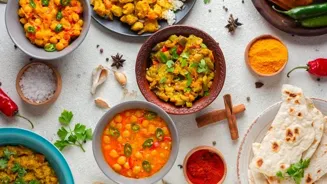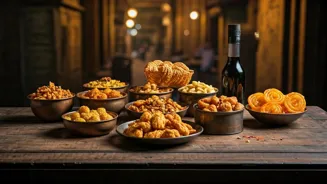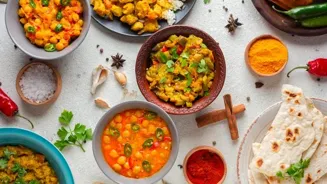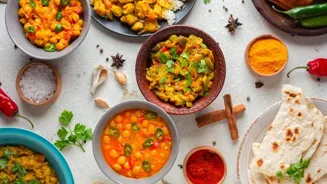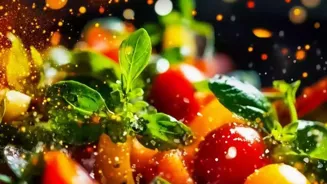Discover the heart of India through its vibrant street food culture. A culinary adventure awaits!
India, a land of vibrant colours, diverse cultures, and rich history, is also a paradise for food lovers.
And when it comes to experiencing the true taste of India, one cannot overlook the significance of street food.
It's not just about satisfying hunger; it's a culinary journey, a cultural immersion, and an integral part of the Indian identity. From the bustling streets of Mumbai to the narrow lanes of Delhi, street food vendors offer a kaleidoscope of flavours that reflects the soul of the nation.
It's a democratizing force, accessible to all, regardless of social standing, bringing people together to relish the simple joys of life.
Street food in India is a social and cultural cornerstone
Street food in India is more than mere sustenance; it's a social phenomenon. It provides livelihoods for millions, supports local economies, and preserves traditional recipes passed down through generations.
The vendors, often small family businesses, take immense pride in their craft, using fresh, locally sourced ingredients and time-honored techniques to create dishes that are both delicious and affordable.
The aroma of spices, the sizzling sound of cooking, and the lively chatter of customers create an atmosphere that is uniquely Indian. Street food stalls become community hubs, where people gather to share stories, exchange news, and connect with their neighbours.
The simple act of enjoying a plate of pani puri or aloo tikki becomes a shared experience that strengthens social bonds.
Indian street food diversity reflects regional culinary traditions
The diversity of Indian street food is staggering, reflecting the culinary traditions of each region. In the North, you might find chole bhature, a hearty chickpea curry served with fluffy fried bread, or aloo tikki, crispy potato patties topped with chutneys and yogurt.
In the West, vada pav, a spiced potato fritter served in a bread roll, is a staple, while dabeli, a sweet and spicy potato mixture in a bun, is a popular snack.
The East is known for its phuchka ( similar to pani puri ), a tangy and spicy water-filled snack, and jhal muri, a puffed rice mixture with vegetables and spices.
The South offers idli and dosa, fermented rice and lentil pancakes served with sambar and chutney, and uttiapam, a thick rice pancake topped with vegetables. Each dish tells a story of local ingredients, cultural influences, and the ingenuity of street food vendors.
Street food sustains India's culinary heritage, blending tradition with innovation
Street food plays a vital role in preserving India's culinary heritage. Many traditional dishes, once confined to home kitchens, have found a wider audience through street food stalls.
Vendors often use recipes that have been passed down through their families for generations, ensuring that these culinary traditions are kept alive. They also adapt and innovate, creating new dishes that blend traditional flavors with modern tastes.
This constant evolution keeps street food exciting and relevant, attracting both locals and tourists alike. The knowledge and skills involved in preparing these dishes are often passed down from parent to child, ensuring the continuity of these culinary traditions.
Street food boosts local economy through employment, tourism, and entrepreneurship
Apart from the delightful taste, street food contributes significantly to the local economy. It generates employment opportunities for numerous people, from the vendors themselves to the suppliers of ingredients and the local farmers.
It supports small-scale businesses and provides a platform for entrepreneurs to showcase their culinary talents. Street food vendors often operate with minimal capital, making it an accessible entry point for those seeking to earn a living.
The vibrant street food scene attracts tourists, both domestic and international, who are eager to experience the authentic flavors of India. This, in turn, boosts the local economy and promotes cultural exchange.
It's a win-win situation, where delicious food and economic empowerment go hand in hand.
Challenges faced by street food industry in India
However, the street food industry does face certain challenges. Hygiene and food safety are major concerns, as vendors often operate in unregulated environments with limited access to clean water and proper sanitation.
Enforcement of food safety standards is crucial to protect the health of consumers. Another challenge is competition from large restaurant chains and the changing lifestyles of urban populations.
As people become more health-conscious and time-constrained, they may opt for more convenient and perceivedly healthier options.
Despite these challenges, street food continues to thrive in India, adapting to changing times and maintaining its appeal through its affordability, accessibility, and, above all, its irresistible flavors.
Its future lies in embracing innovation, implementing strict hygiene standards, and preserving the culinary traditions that make it so unique.
AI Generated Content. Glance/InMobi shall have no liability for the content

